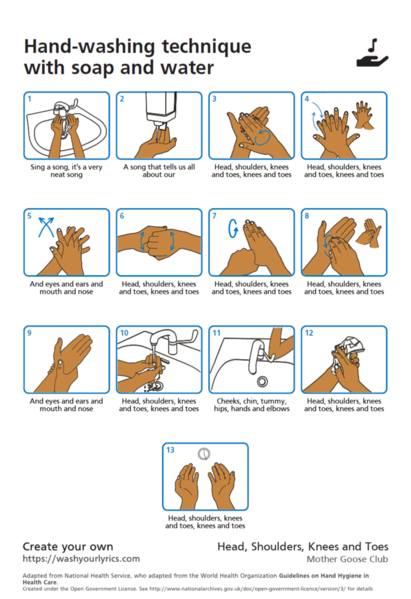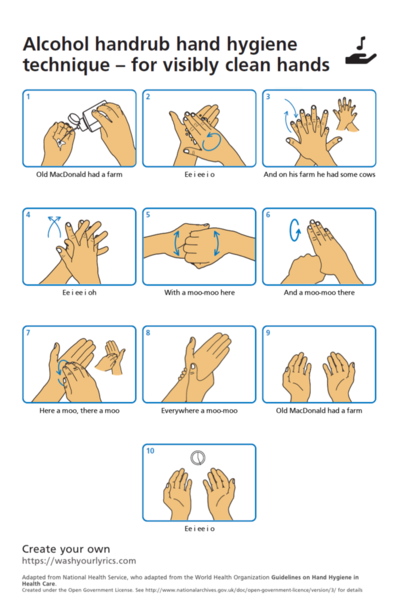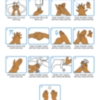Cleaning your hands often is one of the easiest and best ways to prevent the spread of the new coronavirus that causes COVID-19. It can also help reduce the spread of the flu, colds and other respiratory infections. It can also help you prevent foodborne illnesses while cooking, such as salmonella.
Handwashing can also reduce the chance of food allergy reactions from cross-contact on surfaces.
The average person touches their face about 23 times an hour.1 Your hands come in contact with many germs. Kids’ hands can be especially germy, and when they touch their face, they increase their chances of getting sick. Keeping them clean can help you and others stay healthy.
Lather Up the Right Way
Handwashing seems like a simple task. Children learn it at a young age. But there actually is a correct way to do it. Here are tips you and your child can practice together:
- Wet your hands with clean, running water.
- Add soap and rub your hands together to lather the soap. Take care to rub your palms, backs of your hands, between your fingers and under your fingernails.
- Wash your hands for at least 20 seconds. For fun, sing a song while you wash. You can use the alphabet song, sing “Happy Birthday” twice or pick your favorite song.*
- Rinse your hands well with running water.
- Dry your hands using a clean towel. Or air dry them if no towels are available. Don’t rub them on your clothes or you could get them dirty.
- Turn off the faucet with your elbow or with a paper towel.
*You can create a poster or infographic using your child's favorite song on the WashYourLyrics.com website. Nicole Gaghan, art director for the Asthma and Allergy Foundation of America (AAFA) recommends singing “Head, Shoulders, Knees and Toes.” It's one of her daughter's favorites.
To help your kids understand why they need to wash their hands properly, show them the video below of a blacklight experiment. If you don’t wash your hands properly, the blacklight shows the germs left on your hands.
When you wash your hands is important too. Remember to wash:
- After you use the bathroom
- Before eating
- When preparing food
- After caring for someone who is sick
- After changing a child’s diaper
- After cleaning or handling trash
- After blowing your nose, sneezing or coughing
- After touching a frequently touched surface, including cell phones and computers, especially in public areas
Choose the Right Hand Sanitizer
If you can’t wash your hands, hand sanitizer is the next best tool – if it’s the right kind. Hand sanitizer should have the right combination of alcohol and strength. Look for a hand sanitizer that contains:
- At least 60% ethyl alcohol (ethanol), or
- At least 70% isopropyl alcohol (isopropynol)
When applying hand sanitizer, rub it on all surfaces of your hands for at least 20 seconds. Let your hands air dry. Teach your child to do the same. You can use a song to help ensure your child rubs their hands for 20 seconds. “Old MacDonald Had a Farm” is a great song they can sing while cleaning their hands.
Hand sanitizers don’t remove food proteins though. If you want to clean your hands to prevent cross-contact, washing your hands with soap and water is the best way to try to remove food proteins.
Hand Sanitizer Warnings and Recalls
Avoid hand sanitizers that contain 1-propanol and methanol (a toxic type of wood alcohol). Methanol and 1-propanol should not be applied to skin. Several toxic hand sanitizers are now on the market to meet the demand caused by the new coronavirus. The Food and Drug Administration (FDA) has issued a warning about several brands of harmful hand sanitizers. Some products have been found to contain methanol and 1-propanol but are labeled ethanol. Some products are under recall from the manufacturing companies. The FDA website has a warning list of hand sanitizers to avoid.
Methanol can cause symptoms that can include nausea, vomiting, headache, blurred vision, seizures. 1-propanol can cause confusion, decreased consciousness and slowed breathing or pulse. If you use a hand sanitizer and have symptoms like these, get medical help right away. Then report the reaction to the FDA.
Other Safety Tips for Hand Sanitizer Use
- Also, remember these other safety tips:
- Supervise children when they use hand sanitizer.
- Any hand sanitizer can be harmful if ingested.
- Don't store the hand sanitizer in high heat (like in your car).
- Don’t use surface disinfectant wipes to clean your hands, your child's hands or any part of the body. They can cause irritation on your skin and eyes. Wash your hands after using them to clean surfaces. Don’t let children use them to clean.
Moisturize After Washing
Frequent handwashing and sanitizing can cause atopic dermatitis (eczema) to flare. Avoid harsh antiseptic soaps. After you or your child washes their hands, pat the skin dry. Try not to rub the skin. Then use a moisturizer.
Proper handwashing is effective in preventing the spread of the new coronavirus and other illnesses. But it doesn’t work alone. Combine it with physical (social) distancing and wearing a mask to reduce the spread of the new coronavirus.
JOIN NOW
References
1. Kwok, Y. L., Gralton, J., & Mclaws, M. (2015). Face touching: A frequent habit that has implications for hand hygiene. American Journal of Infection Control, 43(2), 112-114. doi:10.1016/j.ajic.2014.10.015





Comments (0)